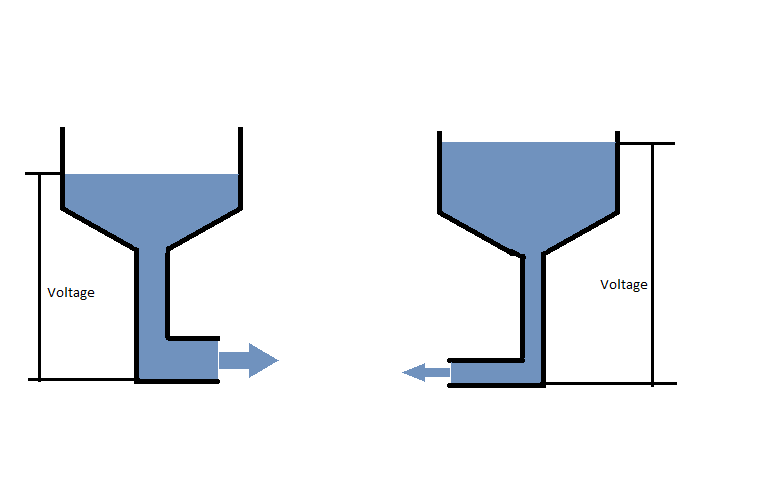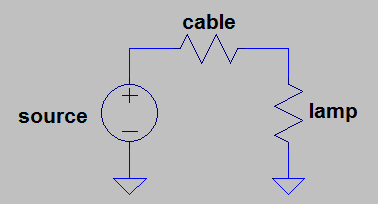Tuto electrical
Welcome, noble player, we salute you on starting your journey into the world of electricity!
This tutorial aims to introduce to you the fundamentals of electricity, which will accompany you as you progress and learn not only how to manipulate it but also how to utilize it. As you might have noticed before coming here this mod is trying to come as close as possible to real life physics, so to have an easier time playing with Electrical Age (Henceforth referred to as Eln), we will aim to supply you with an introductory level of knowledge about electricity.
To those who already have some knowledge, you should know that Eln models Direct Current (DC), not Alternating Current (AC). This is always true, even though some blocks appear as they would have for an AC system.
Contents
Basics of Electricity
Electricity is defined as the movement of free electrons. Everything around you is harnessing this motion, your TV, Stereo, Personal computer and etc.
To talk about any numbers in Electricity we need to understand the fundamental three principles:
- Voltage - V - How strong is the force that pushes the electrons forward
- Current - I - How many electrons are passing through a slice of the wire in a given time
- Resistance = R - The material's natural tendency to resist the free movement (flow) of electrons
These three values are all used to describe the same thing, the movement of electrons. In our case the movement always happens in a closed loop also known as a circuit. Its the elements that we place in the circuit that allow us to harness the power of the movement. To further explain these principles we will use a common analogy with a water tank.
Voltage
As mentioned before we will be using analogies of a water tank to explain the terms. In this image Voltage is displayed as pressure that the water itself is pushing it out of the tank ( The force that pushes waters downwards towards the end of the tank)
The pressure at the end of the tank can represent voltage, a higher water level will result in more pressure ( Voltage ), this analogy is used to display that Voltage is the force that pushes electrons, is actually the difference between the level of charge in a wire, or the difference in height of a water tank. The tank can also be viewed as a form of storage, as we use up the water in the tank the pressure goes lower, so does the Voltage from a battery that results in a lower overall Voltage a practical example would be a light getting dimmer in a flashlight as you use up a bigger portion of the battery.
Current
The analogy to Current - How many electrons are passing through a slice of the wire at a given time period (usually a second) can be shown as the amount of water flowing out over a certain period of time, we can count the electrons in wires or the volume of water in this example 1 liter of water passes the end of the tank per second, or to make 1 ampere (amp). we would need to move 624,100,000,000,000,000 electrons through a slice of wire in 1 second (pretty much, eh ?).
As you can see the height of the water inside the tanks is at the same level, that means the voltage is the same ( or the pressure pushing down the water) but the amount of water going out is different, because the hose at the end is a lot wider, thus ending up with a higher Current ( Flow )
Resistance
In a perfect world there would be no resistance and the electricity could pass freely, but in reality it is nothing like this. To display resistance we will view electricity and the water flow as a movement / motion, in the water tank example you can see the size of the hose differs thus making it easier for the water to flow or the opposite being fairly small and resisting the flow. In wires we have other molecules or atoms that affect how easily can the free electrons move in the closed loop. Resistance is measured by Ohms and can be described as the resistance between two points that require the Voltage ( force / pushing power ) of 1 volt to move 1 ampere worth of Current ( electrons).
Ohm's Law
Combining the principles we just learned, Ohm used them developed a formula
V = I * R
Where the letters are :
- V - Voltage counted in Volts
- I - Current (May also be called Amperage) counted in Amps
- R - Resistance counted in Ohms
Practical task
A scheme of what we will be analysing
Real scenario
Voltage provided by a source out of the wall (Blue box) = 200 V (Volts)
We are given the resistance value of the lamp = 1333 Ω (Ohms)
Cable resistance = 0.1Ω (Ohms)
Total resistance = lamp resistance + cable resistance = 1333Ω (We do not take the 0.1 ohm in the sum because in comparison (0.075% of 1333) it is practically meaningless )
To find the current we will have to apply Ohm's Law Current = Source voltage / Total resistance = 200V/1333Ω = 0.15 A



